Disclosure: Links marked with * are Affiliate Links. As an Amazon Associate, I earn from qualifying purchases if you decide to make a purchase through these links – at no cost for you!
Nowhere is one so close to the sky as on the top of Mount Everest, they say. In fact, the Qomolangma, as it is called in Tibetan, is the highest mountain on earth at 8848 meters above sea level.
Although the mountain has cost countless lives, it still evokes a fascination that results in hundreds of mountaineers and tourists trying to climb it every year.
How long does it take to climb Mount Everest? The average duration of an expedition to Mount Everest is two months. The reason for this extremely long period of time is due to various factors like providers, fitness, weather and some more which we will discuss in this blog post.
From the base camp on the south side, Lhakpa Gelu Sherpa made it to the top of Mount Everest, and into the Guinness Book of World Records, in ten hours, 56 minutes and 46 seconds in 2003. But he can probably not be a benchmark or role model for anyone…
Things to know about Mount Everest
Mount Everest – or rather Qomolangma?
In Tibetan legends, the Himalayas were once an ocean where plants and creatures lived peacefully together. Until one day a five-headed monster appeared and huge tidal waves threatened to destroy everything.
Five colorful clouds hurried down from the sky to the rescue. Transformed into goddesses, they defeated the monster with magical powers. Following the pleas of the earthly creatures, they did not return to their heavenly residence. They ordered the ocean to give way and transformed themselves into five eternally white mountain peaks, which have watched over life on earth ever since.

Qomolangma – the goddess of the universe
The highest of the five peaks is called Qomolangma – the goddess of the universe. The mountain was discovered by Tibetans who lived in the south of their country. Since then, the mountain has borne the native name Qomolangma. The Chinese land surveyors Shengzhu, Churbizanbo and Lanbenzhanba first surveyed the mountain and marked it on a map during an expedition between 1715 and 1717.
How the name “Everest” came about.
The British Sir George Everest led a mission to the Great Trigonometric Survey of India for many years. This was based on colonialist plans and had the goal of exploring and surveying the southern subcontinent of India, producing maps and finally finding trade routes.
After George Everest’s retirement, Andrew Scott Waugh took over the mission, and he also succeeded in 1852 in setting the height of the mountain peak at 8840 meters. He reported this in a letter to the Royal Geographical Society in 1856, and gave the mountain Mount Everest, honoring its predecessor.
The Tibetan population sees the name controversially due to the colonial history and insists on the original name Qomolangma. Nevertheless, the name Mount Everest has established itself in the western world, which is why we use it in our description, but not without pointing out the problem.
Where is Mount Everest?
The Khumbu region in Nepal, in the middle of the Himalayas, the Mount Everest stretches towards the sky. The Himalayas are also home to ten of the fourteen mountains, whose peaks are more than 8000 meters high.
The word stem “Himalaya” means “residence of the snow”. Mount Everest is located in northern Nepal, on the border with China – in the autonomous region of Tibet. The western and the south-eastern ridge of the summit form the border. The southern and the northern side of the mountain are on the UNESCO protection list: as UNESCO World Heritage and UNESCO Biosphere Reserve.

The first expeditions to climb Mount Everest
Actually, the first British mission in 1921 was supposed to be primarily a reconnaissance mission to make geological surveys. Maps were to be made and possible routes of ascent were to be sought. But when George Mallory discovered a passable route – today’s usual “northern route” – the attempt was made. They were close to their goal – but they failed because of the beginning monsoon. In the following years the British tried to reach the summit with numerous expeditions, and so the legend of George Mallory was born.
The tireless George Mallory was involved in numerous missions in the following years. In 1922, for example, he and two other mountaineers set the new altitude record of 8225 meters without additional oxygen. He came closer and closer to the summit – but 1924 was to be his last attempt to climb – together with Andrew Irvine he did not return from the attempt. To this day there is a legend surrounding this attempt: Did they reach the summit or did they die before? Mallory’s body remained missing for decades – it was not until 1999 that it was found, but there is no clear proof that he was the first man to reach the summit.
The first ascent of Mount Everest
Until 1953 there were numerous other expeditions that came close to the goal but failed. Some of them involved the Nepalese Indian climber Tenzing Norgay, who was hired as a porter, i.e. “Sherpa”. The first successful mission was the ninth expedition of the British, led by John Hunt.
The New Zealander Edmund Hillary, who was part of the expedition, together with his Sherpas Tenzing Norgay and Ang Nyima, first moved the last camp to 8510 meters. From this point, Edmund Hillary and Tenzing Norgay started their successful attempt at 6:30 a.m., and reached the summit around 11:30 a.m.
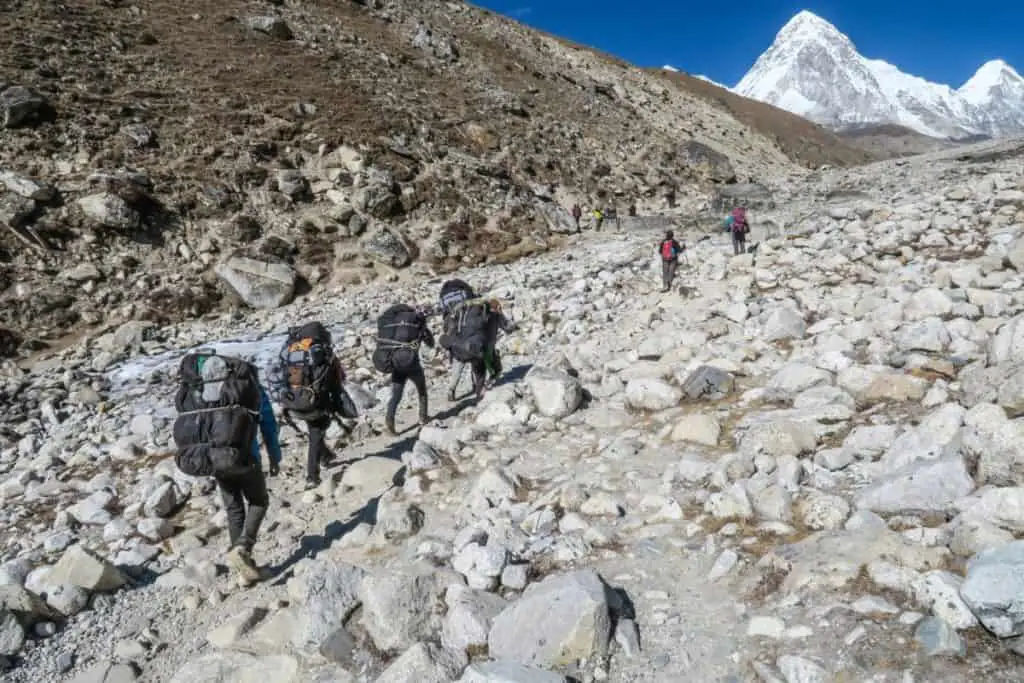
Tourist expeditions
Unlike mountains that can only be climbed by professional mountaineers, Mount Everest has two routes that have also become established for “tourists”. On the one hand, there are no insurmountable cliffs or chicanes on these routes, and on the other hand, an infrastructure is created on the mountain every year to make the “ascent for everyone” possible.
Nevertheless, the ascent remains highly dangerous – it is often underestimated, and is always at the mercy of the forces of nature. Even highly professional climbers have lost their lives on this mountain.
The development of summit tourism on Mount Everest.
When the spell was broken, and a route for the ascent was found, more and more nations started expeditions to the summit of Mount Everest in the following years. In 1954, two expeditions were successful, and the number of summit expeditions increased year by year.
Since Hillary and Norgay had reached the summit via the south side, i.e. from Nepal, the race for the first ascent also started from the north, i.e. from the Tibetan autonomous region. This was achieved in 1960 by a Chinese expedition. Strangely enough, this ascent is not only the first over the North Col but also the first – albeit necessarily – barefoot: Chu Ying-Hua covered the last meters without shoes and on the shoulders of a colleague.
Over the years, further records have been broken and the creativity is broadly diversified: The first woman on the summit, the first expedition without additional oxygen, the youngest climber, the oldest, the first blind man on Mount Everest, the first leg amputee, and many more. Worth mentioning is perhaps the longest stay on the summit – an amazing 21 hours without additional oxygen!
The first tourist expeditions started in 1980 and caused a real hype: Up to the year 1979 there were 99 summit ascents – this number had already doubled by 1985. In 1993, 100 people reached the summit within a few months, and since the turn of the millennium, more than 200 summit climbers have been regularly counted each year. Thus the rush continued until a record season in 2007 with 630 summit ascents. About one-third of all ascents are now commercial – full service with tourist-friendly preparation of the route.
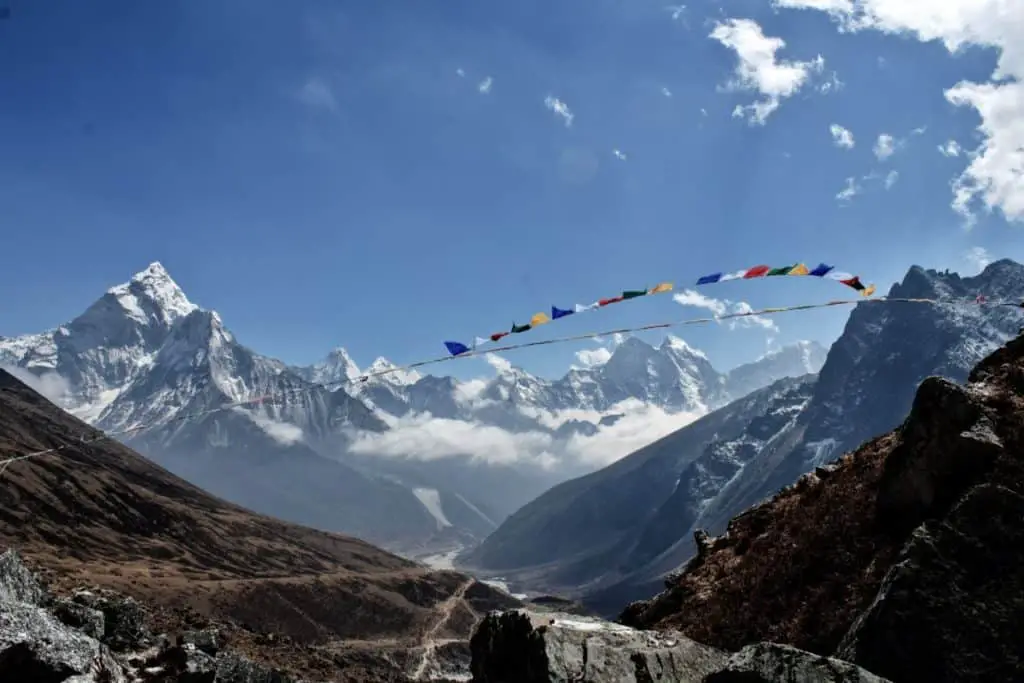
Full service for tourists
The most important help for tourist mountaineers are the so-called sherpas. “Sherpa” is a Tibetan word and means “those who immigrated from the east”. The Sherpa people migrated from Tibet to the Solu-Khumbu region around 1500 and settled there.
At that time the region was largely uninhabited, not least because of the inhospitable conditions created by the extreme altitude. Over time, the people got used to nature, and so one can speak of a genetic adaptation to extreme heights, and extreme tenacity. When in the 19th century a trade route established itself over the 5716 meter high mountain pass Nangpa La between China and India, the Sherpas began to work as companions for caravans and middlemen in the trade traffic.
From the early 20th century on they were also hired as supporters for expeditions into the high mountains – the “Sherpa” was born.
Tourist expedition providers nowadays hire Sherpa to provide “full service” for their clients. The fact that the Sherpa carries the complete luggage of the tourist mountaineers is the least of the tasks: Before the actual season on Mount Everest begins, the Sherpa prepares the infrastructure on the mountain, which is then offered later. First the base camp is set up – in the times of Hillary and Norgay’s the adventurers transported their tents, as well as the provisions and equipment themselves up there.
Today the tourists can expect a complete tent camp with kitchen and bathroom tents, single sleeping tents, as well as the complete catering including cooks.

The Sherpa pave the way up
After the base camp is established, the sherpas start to prepare the route for the further ascent. On the southern route, just above the base camp, there is the famous “Khumbu Icefall”. This is a glacier area that is extremely rugged on the one hand, but on the other hand it is also very mobile.
Movement of the ice and thus the formation of new deep crevasses or avalanches can be expected at any time. In order to maneuver the expedition participants as safely as possible through this area, the sherpas erect footbridges with metal ladders, railings and tethers – and of course they transport the “hardware” for this up the mountain themselves. The Icefall is so much in motion that every year a completely new route has to be found.
And then the Sherpa work their way up and up – until the last path to the top is made passable even for inexperienced climbers. In this way, the way is then paved for “mass tourism”, and the various travel groups can begin to settle the base camp.
The Acclimatization
The human body needs time to get used to the lower oxygen content at altitude. Already at 2000 meters, the human body begins to feel uncomfortable, weak and tired. About one in four people even develop what is known as “altitude sickness”. These are symptoms like headaches, nausea and vomiting. Normally the body gets used to the altitude after a few days. If this is not the case, the only medicine is the descent.
For sufficient acclimatization, between 300 and 500 meters of altitude should be covered per day. It is recommended to take a break every three days. The starting point for the Mount Everest ascent from the south side is Lukla, a Nepalese village from which most mountaineers arrive by plane from Kathmandu. Lukla lies at an altitude of 2860 meters, so there are almost 6000 meters to climb to the summit of Mount Everest with its 8848 meters. If one reckons with an ascent of 1200 meters every four days, the mountaineer would need 20 days for acclimatization alone.
The death zone
At altitudes above 5300 meters the human body cannot fully acclimatize – no permanent residence and survival is possible here. Above 7000 meters, and very critically above 8000 meters, the altitude begins, which is also called the “death zone”. Here the human body can no longer regenerate, even with sufficient oxygen no rest is possible. The reason for this is that the oxygen partial pressure in the alveoli falls below the minimum value. The oxygen saturation in the arterial blood is too low and the body relaxes from minute to minute at this level.
The Hypoxia Tent
Some tour operators provide their travelers with tents in the run-up to the expedition Hypoxia – tents. These can be set up at home, even the bed fits in. In the tent conditions like at 2600 meters height can be created – about 15 to 16 % O2, or even much higher locations can be simulated. In these tents, the traveler can train, and most importantly, sleep. By preparing in a hypoxia tent, it is possible to shorten the total duration of the expedition by crucial days – thus saving costs and time.
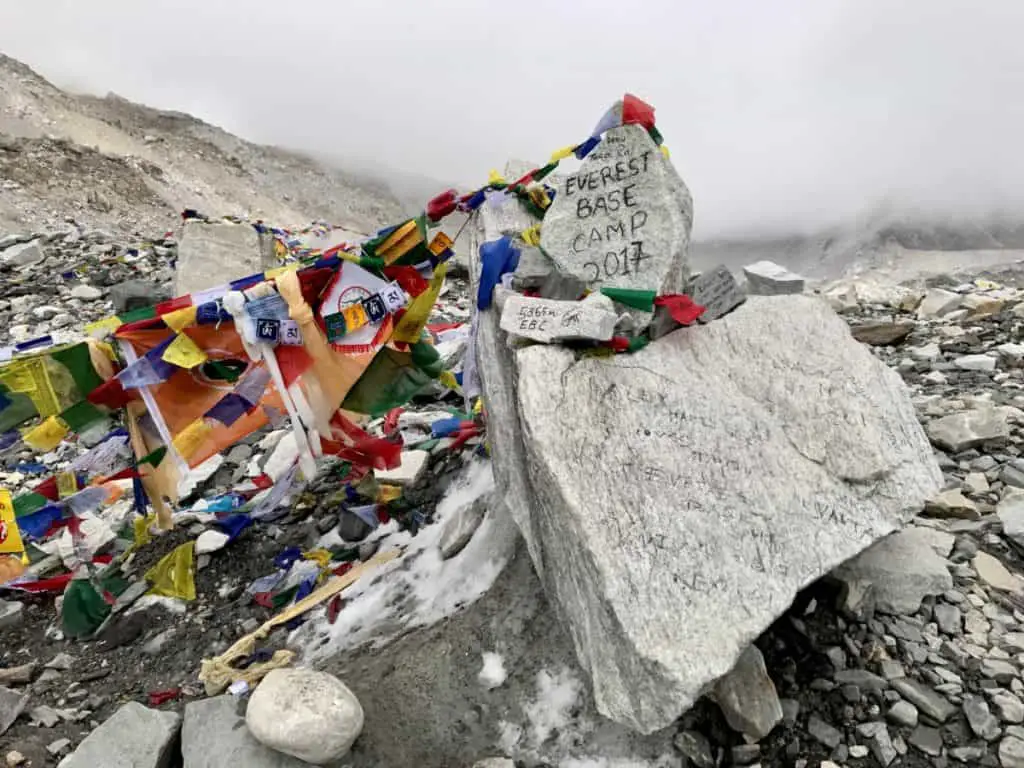
The “Himalayan Siege Tactics”
Professional mountaineers today are critical of the expedition-style of “siege tactics”. This refers to the method of setting up a camp as close to the summit as possible and waiting for the right weather to climb the summit. Basically, this is one of the most successful methods, but mass tourism and the many “extras” that amateur mountaineers buy for themselves sometimes create huge camps. Without these comfortable camps, most people would never be able to climb this peak – thus, in the eyes of professional mountaineers, the sportive idea is lost. A direct consequence of this siege is the waste problem, which is a real problem at altitude and is constantly increasing.
Waiting for the window days
The weather conditions in the Himalayas are extreme, very rough and changeable. In winter, the average temperature on the summit of Mount Everest is -36 degrees Celsius, in extreme cases up to -60 degrees Celsius. From June to September the mountain is under the influence of the Indian monsoon – heavy snowstorms and permanent rainfall make any ascent impossible.
The only possible months for expeditions on Mount Everest are May and October. Sudden changes in the weather, extreme drops in temperature and heavy snowfall also characterize the climate in these months. Only a few days provide relatively stable weather – these are the so-called “window days”.
Both professional mountaineers and tour operators make their travel plans in such a way that the few “window days” can be ideally used – the mountaineer should be sufficiently acclimatized and rested near the summit when the stable weather window is expected or occurs. The most likely time for window days is May 15-25 each year. It is therefore not surprising that most tour operators offer almost identical periods for their trips.
Duration and period of some tour providers
- Alpine Amical: April 4 – June 4
- Summit climb: April 4 – June 4
- Adventure Consultants: April 1 – June 2
- Adventure alternative: April 1 – June 4
- Alpineascents: 29 March – 3 June
- Adventure peaks: April 4 – June 2
The tour operator Amical Alpin offers expeditions to Mount Everest with a meticulous height – acclimatization plan inclusive height training in the alps and hypoxia tent rental, which last altogether only 40 days.
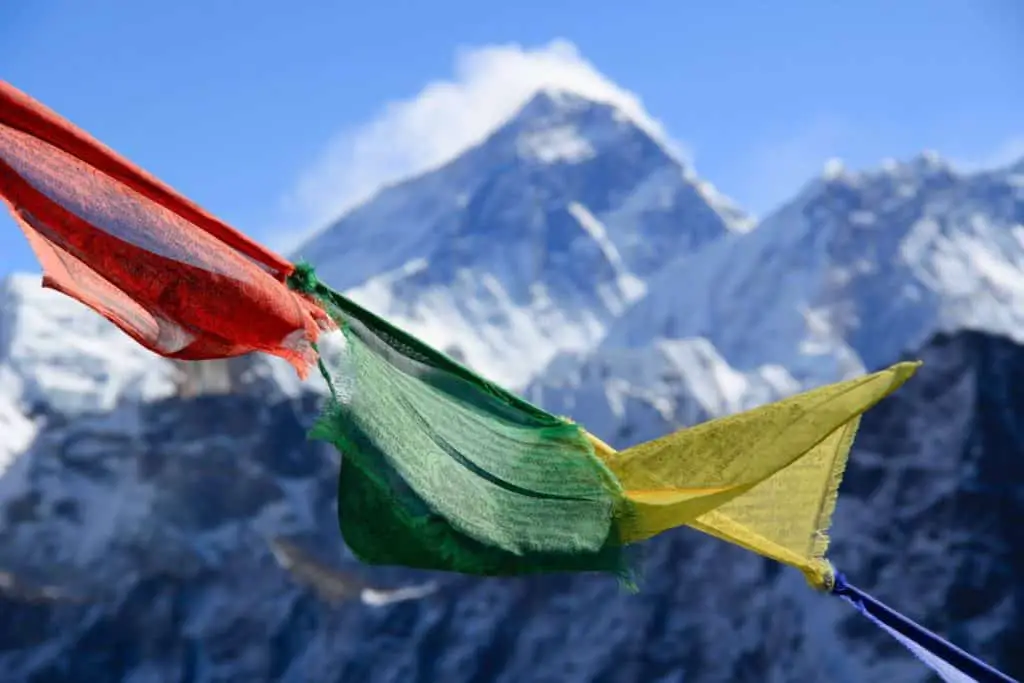
The last meters to the summit
The last stage usually starts around midnight from the last camp. The last, short night all tour participants sleep with oxygen masks. At sunrise, the summit is already within reach, and for the first time the climbers look down on the vastness of the Himalayas in all directions.
The last camp is located on the south ascent at an altitude of 7950 meters. The ascent takes about 6-7 hours (if there is a clear path at Hillary Step), and the descent takes 3-4 hours. If one chooses the northern route, there is the possibility to set up the last camp before the summit at 8250 – 8300 meters.
This has the advantage over the southern route that the summit stage is shorter – but in return, it is more exposed to the weather and technically more demanding. Another advantage, however, is that the northern route is less frequented, and the risk of traffic jams is not as high as on the Hillary Step.
The Hillary Step
Named after the first man on the summit, the Hillary Step is the last obstacle on the southern route of the Himalayan ascent. The Step is a difficult rock formation about twelve meters in size just before the summit of Mount Everest. These last meters are one of the most demanding chicanes on the southern route, and also one of the main reasons why, according to professional climbers, no tourists should climb the mountain.
Due to the large number of climbers who make the final climb on one of the window days, and the inexperience of many, dangerous traffic jams form around the Hillary Step. Considering that every minute that a person stays longer in the “death zone” above 8000 meters can mean complete fatigue and danger to life, the traffic jams around the Hillary Step are indeed high risk. In fact, traffic jams have been the cause of death for climbers who have failed to make the descent.
Further Information
Costs for the ascent of Mount Everest
If you want to climb Mount Everest, you have to dig deep into your pockets. The costs for flight, accommodation, sherpas, etc. are included. Not the only ones. The two countries from which the expeditions start to charge fees for climbing the mountain.
Until 2019, such a permit would cost around 10,000 euros on the Nepalese side. For mountaineers who want to climb Mount Everest from Tibet, the Chinese government has increased in 2020 the fees from $9,950 to $15,800. The Nepalese government is currently considering increasing the fees to 31,000 Euros.
The idea behind the price increases is to reduce the rush to the summit, as there are more and more problems with traffic jams on the last leg, and with garbage on the mountain.
Costs for Sherpas
Sherpa on Mount Everest is probably one of the hardest jobs in the world: They haul the luggage and equipment for the Mount Everest tourists up the mountain – in addition to their own.
Before that, they prepare the way up, build the camps including cooking, bathroom, communication and sleeping tents, carry the oxygen bottles to the summit, help the tourists and support them physically and morally. In the run-up to the expedition, they pave the way through the infamous Icefall and constantly risk their lives.
For all this, their earnings are not particularly high: on average, they earn between 2000 and 5000 euros per season – with a little luck, they will receive a decent tip from the tourists at the end of the tour.
The waste problem
Somehow everyone can understand that mountain tourists who have successfully climbed Mount Everest would prefer to leave everything that is no longer urgently needed at the top.
The exhaustion is certainly unimaginable, and ballast like garbage and toilet waste produced over weeks is certainly not “nice” luggage. Also tents and used up oxygen bottles are obviously left behind as expendable and unloved. It is incomprehensible that the majority of expeditionists actually leave this ballast on the mountain and do not worry about the removal.
So over the years an unimaginable amount of garbage has been left on the mountain. In 2018, China freed Mount Everest from more than eight tons of garbage in a major expedition – two tons of which were human excrement.
Since 2013, 4000 Euro garbage fees are charged per expedition when climbing Mount Everest. These fees will be refunded as a deposit if each participant of the expedition delivers at least eight kilos of garbage after the descent. If the requirement is not met, the deposit will be retained as a penalty.
Limitation of the summiteers
In the future, the governments of Nepal and China plan to limit the number of expeditions. This should reduce the garbage problem, and also reduce the problems with traffic jams on the mountain.
A limit of 150 people per day at the summit is under discussion. The proposal was drawn up by a committee that, among other things, investigated the mortality rate at Mount Everest and was to develop measures for prevention. Another proposal is to allow access to Mount Everest only to experienced mountaineers who have climbed at least one 6,500-meter peak.
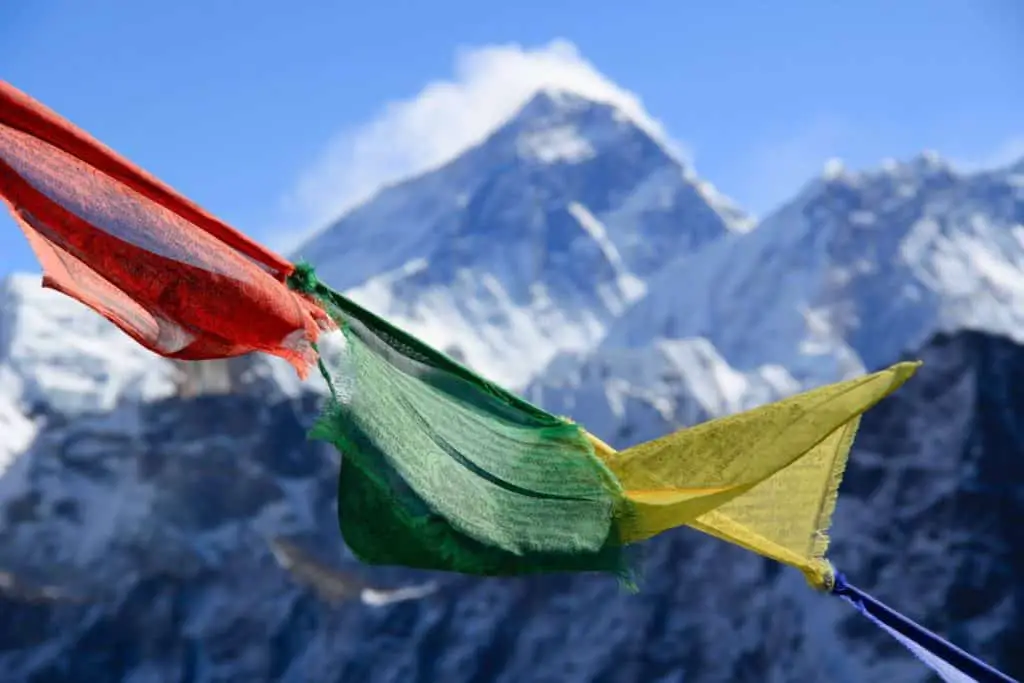
Related Questions
How can you improve your acclimatization?
In addition to preparatory measures such as overnight stays and sports (Spinnig, treadmill) in the hypoxia – tent, the ambitious mountaineer should not exceed the daily overcome height under any circumstances.
However, it is advisable to take a long walk up to the new altitude before you lay down to rest at the new altitude and to descend this stretch again. Never ignore the signs of altitude sickness – if they occur, a break or the descent is unavoidable!
Do you really stumble over dead bodies on the way to the summit?
You don’t have to climb directly over dead bodies, explains one mountain guide. However, on both common ascent routes, there are people on the right and left in visible distance. Since the recovery of the corpses at such heights is very difficult, power-intensive and ultimately life-threatening, most of the mountaineers who have had accidents are left where they lie – in the eternal height.
It is estimated that over 300 climbers lost their lives in the climb to Mount Everest.
Who is Green Boots?
For years “Green Boots” was the name of a corpse that lay at about 8500 meters on the edge of the northern route. Because of its flashy neon green boots, it inadvertently served as a signpost and memorial. He was killed in an accident in 1996, and his identity remained as unclear as the circumstances of his disappearance: after 18 years the corpse disappeared from the side of the road.
Attention: You have to take care of your safety when climbing! The information on climbtheearth.com only helps you to learn. Before you climb, you should make sure that you have been properly instructed by an expert and that you follow all safety precautions.
Disclosure: This website is the property of Martin Lütkemeyer and is operated by Martin Lütkemeyer. Martin Lütkemeyer is a member of the Amazon Services LLC Affiliate Program, an affiliate advertising program designed to enable Web sites to earn advertising revenue through advertising and linking to Amazon.com. Links marked with * are affiliate links.
